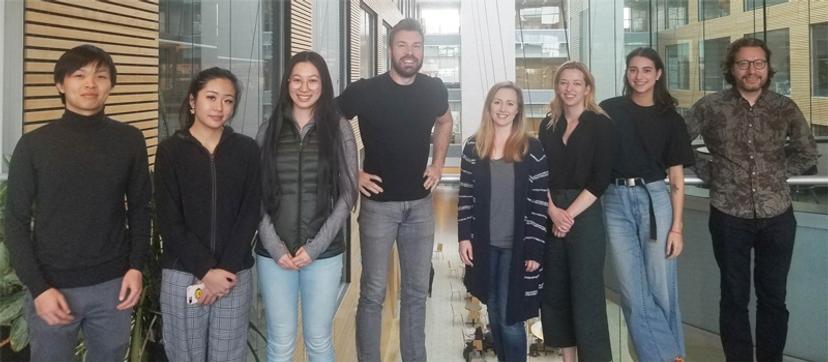RNA analysis helps to push back the frontiers of neuroscience research
Learn how a research group in Canada is using RNA-focused, RNA detection and RNA in situ hybridization techniques to unravel the intricacies of memory formation in the brain
28 Oct 2019It is often said – and by neuroscientists in particular – that the human brain is the most complex piece of organized matter in the known universe. The brain is approached with a degree of awe and a sense of privilege by those fortunate enough to pursue their careers in researching its depths. But it is also one way of saying that we still do not really know how it works at the detailed molecular and cellular level.
Over the past 20 years, research has come a long way in mapping the areas of the brain which are broadly responsible for all the functions and behaviors that we observe. This has been driven largely by technology, particularly more sophisticated real-time imaging, but several uncharted frontiers remain around exactly how those functions are achieved at the cellular level. For example, how the brain’s structure gives rise to consciousness or how memories are formed, consolidated, stored and retrieved.
It is this latter frontier that drives the work of a leading research group at the University of British Columbia (UBC) in Canada. Dr. Mark Cembrowski is an assistant professor within the Department of Cellular and Physiological Sciences at UBC, and his team uses cutting-edge RNA techniques to study memory across the spatial scale of the nervous system: from molecules to cells, to circuits and then behavior. And it is not just basic research – Cembrowski is interested in the therapeutics angle and has memory disorders in his sights.

Unraveling the wonders and pitfalls of memory
The Cembrowski Lab uses mouse models to understand the neural mechanism of memory at the molecular and cellular level. He points out that we already know the gross brain regions involved – the hippocampus, and the amygdala (for fear memory) – but what are the causal cells and molecules involved in those regions? If science is to help those with memory-related disorders, such as sufferers of post-traumatic stress disorder (PTSD), then a molecular endpoint is needed through an understanding of how cells change in order to support memories of different types.
Cembrowski has a particular research line in fear memory and is beginning to understand how the hippocampus is able to perform so many different functions, in particular through its connection with the amygdala (the brain’s ‘fear center’). It turns out that a very specific region of the hippocampus called the subiculum is key, and it appears to be the brain’s short-term memory device.
However, it is not a “monolithic processor”, as Cembrowski puts it. There are several complex neuronal projections from the subiculum, including one to the amygdala which imparts a very specific type of fear memory. Unwanted memories that are seared into the brain by PTSD (for example) are just the type of target at which Cembrowski hopes therapeutics will one day be aimed. But how has he come by this knowledge and what unique challenges does his group face in working with brain cells?
Why RNA analysis?
Cembrowski’s lab focuses on mouse models and he uses a range of RNA analytical techniques which give gene expression readouts that are simply not possible at the protein level. His group has been an early adopter of Advanced Cell Diagnostics’ RNAscope™ HiPlex Assay – a universal assay that works independently of the genes of interest. This is vitally important in the brain, where both gene identification and expression are poorly understood.
There are other reasons why an RNA-based readout works so much better than a protein-based readout in this context, as Cembrowski points out: “Protein-based readouts have a blind spot. The protein you are interested in might not be located in the cell body of the neuron where you are looking, but rather located down to the distal axons which can be several millimeters away. RNA, on the other hand, provides an ideal label since it tends to dwell around the cell body; if you have the right probe, it should label the cell bodies and give you an unequivocal readout of which cells are expressing it.”

Cembrowski adds that protein analysis is limited by the antibody tools that are currently available for looking inside tissues. Advanced Cell Diagnostics’ technology can design an RNA detection probe for any target in two weeks, which is enabling him to take a multiplexed approach to quantifying gene expression which has not been achieved convincingly at the protein level within the brain: “As we identify more and more targets in a section of brain tissue, this technology gives us a combinatorial approach to identifying cells spatially within their native tissues and then quantifying gene expression in those cells.”
This becomes very important when considering the fine-scale reorganization of neuronal subtypes that allows different types of memories to be formed, stored and retrieved. Whilst neuronal subtypes are fixed in their overall role, their innate plasticity allows for fine-scale changes which provide the “biophysical substrate” for memory. Teasing out those changes requires the sort of versatile technology that RNAscope™ provides. Ultimately, as Cembrowski asserts: “Memory, biophysically, is all about changes.”
Future directions
Cembrowski has some interesting ideas about where his research could lead. Top of his list is therapeutics targeted at memory disorders, both for memory deficits and the pathologically enhanced memories that come through PTSD. But he closes with a fascinating prospect: “The brain is the great unknown. We might use this knowledge biomimetically to create better computers. The brain is the best computational device that exists in the known universe and we could extend the same principles to next-generation computing.”
Find out more about the Cembrowski research group and how the RNAscope™ technology from Advanced Cell Diagnostics could help you.

